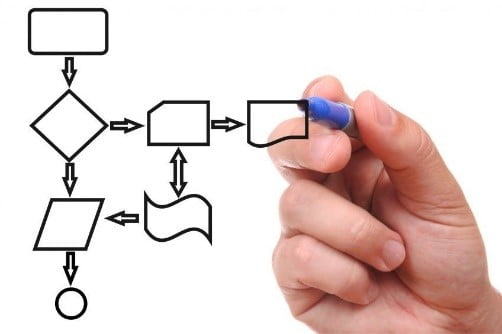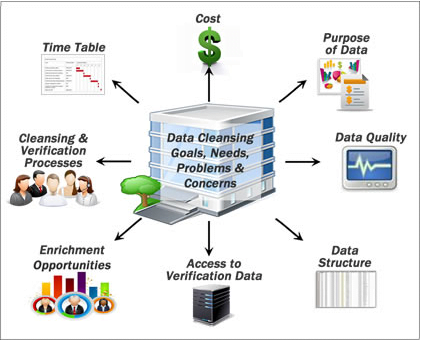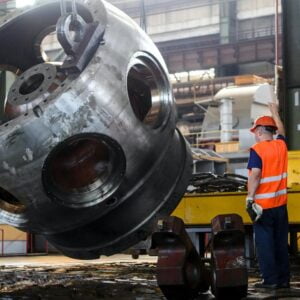Most organisations that carry out equipment maintenance have some sort of Planning and Scheduling process in place, ranging from a basic manual card system to an advanced Computerised Maintenance Management System such as SAP, Pronto or Maximo.
This is the first in a series of 3 articles, where we will explore the “Big Picture” systemic issues associated with the overall maintenance Planning and Scheduling process.
The intent of planning and scheduling
Irrespective of the sophistication of the system being used, the intent of Planning and Scheduling work remains the same across all businesses:
- Perform the work safely
- Perform the work cost effectively
- Perform the work with minimal impact on Production requirements
- Identify criticality of tasks and risk to business
- Align task requirements to labour and materials availability
We have the privilege of working with a wide range of businesses that use a variety of Planning and Scheduling processes. These businesses span a range of industries including:
- Mining
- Processing Plants
- Manufacturing
- Government Departments- Federal/State and Local
- Utilities
- Facilities Management
- Health Industry – Hospitals
In working with these businesses, we get to see all manner of issues with Planning and Scheduling process, and over the years we have observed a number of recurring themes.
We have identified four main areas where we commonly see issues arising and describe the symptoms, causes and solutions to enhance Planning and Scheduling in your work area.
These four areas are:
1. People and Training
Aligning people to think alike and to all visualise a common goal is hard enough, and then we then add in the knowledge steps to achieve the desired goal. People are all very different and respond differently to knowledge transfer techniques.
Symptom
- No standard formats, everyone doing things differently to each other
- No formalised planning meeting structure to engage stakeholders
- Poor KPI compliance
- Organisation has no formal training for Planning/Scheduling or CMMS being used
Possible Causes
- People are trained in different versions or differently configured CMMS
- There is no nationally recognised “Planning and Scheduling Course” to allow a novice to become skilled in Planning and Scheduling, it takes time to become proficient at it
- People are placed into positions to provide coverage and training is missed altogether
- People are in house trained, this can allow bad habits to be determined as “Best Practice” from others who have implemented “workarounds” to achieve results
- Some training techniques have the potential to drive people to achieve a KPI result rather than follow a desired process or method. Following the correct process/method should achieve compliance not the other way around.
- Movement of people within industry groups – while similar systems/process may be used across same industries, they will always be slightly different.
- Companies can be sometimes caught making the “assumption” that job candidates are aware of their systems/CMMS and provide only basic online training.
2. Process
Process is a structured approach and is often a visually represented way of describing a series of steps to achieve a goal. Commonality is the main driver here to ensure everyone replicates the same steps to remove errors. Given this, do we really understand where we fit into a process, some common questions arise when we think of process in a Planning/Scheduling context:
Symptoms
- No one fully understands the process behind achieving day to day results
- Blurred line of responsibility; Who does what and where does responsibility end?
- Poor work order/notification details due to no standards or expectations being set
- Delivery of different work packages from same work group
- Poor KPI compliance
Possible Causes
- Overcomplication of process; Too many times we see a large and complex process to deliver a result that can be achieved using smaller more concise models
- Ensure that the desired process has a clear and accountable owner to perform each step in the process; It is very hard to address performance issues with no clear accountabilities
- Changes to process’s or systems without updating the dependant mechanisms behind it
- Lack of clarity around process
- CMMS not correctly aligned to process
- People are not trained in process or systems
- KPI not aligned to process output (Lead and Lag)

3. Master Data
Master data is the most overlooked aspect as to why we have issues when Planning and Scheduling. Major data review is expensive and requires Specialists/Subject Matter Experts to successfully deliver a perceived change and value to the business. Some key things that affect the quality of data includes:
Symptoms
- Continual rescheduling of work due to details being incorrect
- Poor KPI Compliance
- Master data can be changed by a large group of people without consultation
- Master Data change process is so onerous that no one bothers changing when faults are found.
- Maintainers complaining about work pack or parts being wrong again
- Maintenance plans have delayed times from CMMS called date to when it is executed
- Inspection vs found faults is always very low
Possible Causes
- Preventive Maintenance Plans are not reviewed regularly
- No continuous improvement/job review undertaken at completion of job
- Maintenance plans out of sequence or need restarting to correctly align to business needs
- Work centre or work unit has not been resourced levelled
- Business continually moves Shutdown events that cause restarting of Maintenance Plans
- Incorrect strategy assigned to equipment

4. KPI Development and Compliance
KPI’s are a necessary part of business to measure how they are performing and to alert when they are deviating from a desired outcome. The use and interpretation of these can be a double-edged sword, on one hand they can be a vital piece of business intelligence and on the other hand be used as a “stick” to beat perceived underperforming teams. The former version is the true intent of KPI’s and should always be seen as such by management. Some common issues we encounter:
Symptoms
- KPI’s have no relevance to group trying to affect the result
- No understanding of what is being measured and why
- No ownership or passion to influence result by responsible work group
- Management driving a culture of achieving result at any cost, “A green KPI is not the end goal”
- Development of a “finger pointing” attitude when sub results are achieved
- Too many lagging and not enough leading KPI’s
Possible Causes
- KPI’s not aligned to measure process adherence underpinning work methods
- No one has been trained to understand inputs/outputs of KPI
- Lack of understanding of KPI has seen assignment to wrong work group
- No formal process to investigate bottlenecking in process
- KPI’s have been developed with unrealistic expectations of compliance
- Lagging KPI is much easier to setup and measure
Solutions
Having noted symptoms and possible causes above, we can follow some simple points that will assist in negating some of the pitfalls encountered.
- Ensure training encompasses process to underpin work methods
- Define and document process
- Align KPI’s to measure process adherence
- Use RACI to fit processes to your organisation
- Use process to identify decision points; Report on decision points
- Develop lead KPI measures to warn of deviation from process
- Analytical review of breakdowns and faults with a piece of equipment vs the current strategy assigned to it; Are we over or under maintaining the asset?
- Ensure there is a continuous improvement aspect to process, this ensures data is reviewed and changed prior to task being performed again
- Regular review of resource levelling, particularly after restarting a large number of Maintenance Plans
- Ensure Master Data is protected from change by at least a change management process
- Train your people in KPI’s – What are they measuring and what formula is being used to derived result. If your people can understand “what” and “how” they can then find out “why” when non-compliance is encountered
- Develop a culture of using KPI’s as business indicators not performance management tools
- Formalise a process to immediately investigate bottlenecking in the process that KPI measures
- Set your people up for success by making KPI’s achievable

I hope that this article has given you some useful tips for better understanding the “Big Picture” aspects of Maintenance Planning and Scheduling. Understanding the high-level items can make your job as a maintenance planner more productive and satisfying, help your organisation to reduce costs and be more effective. If we can help you be more effective as a planner, contact us. Or you may want to consider attending our Maintenance Planning and Scheduling Excellence training course where we give you even more practical tips on how to be a more effective Maintenance Planner and/or Scheduler.
-
Product on sale
 Maintenance Planning and Scheduling Excellence$1,935.00 – $2,150.00
Maintenance Planning and Scheduling Excellence$1,935.00 – $2,150.00 -
Product on sale
 Introduction to Maintenance Management$967.50 – $1,075.00
Introduction to Maintenance Management$967.50 – $1,075.00


